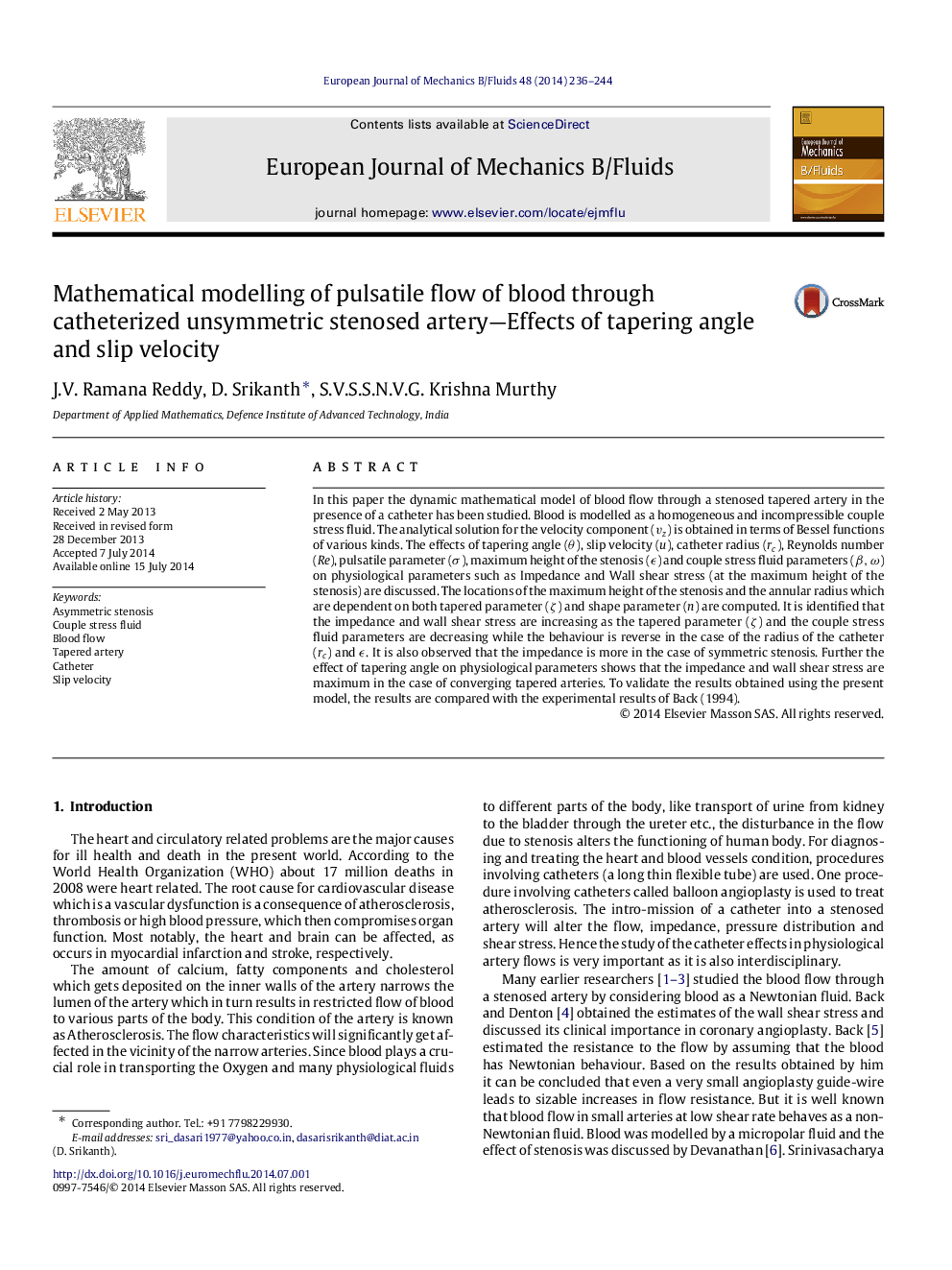| Article ID | Journal | Published Year | Pages | File Type |
|---|---|---|---|---|
| 650400 | European Journal of Mechanics - B/Fluids | 2014 | 9 Pages |
Abstract
In this paper the dynamic mathematical model of blood flow through a stenosed tapered artery in the presence of a catheter has been studied. Blood is modelled as a homogeneous and incompressible couple stress fluid. The analytical solution for the velocity component (vz) is obtained in terms of Bessel functions of various kinds. The effects of tapering angle (θ), slip velocity (u), catheter radius (rc), Reynolds number (Re), pulsatile parameter (Ï), maximum height of the stenosis (ϵ) and couple stress fluid parameters (β,Ï) on physiological parameters such as Impedance and Wall shear stress (at the maximum height of the stenosis) are discussed. The locations of the maximum height of the stenosis and the annular radius which are dependent on both tapered parameter (ζ) and shape parameter (n) are computed. It is identified that the impedance and wall shear stress are increasing as the tapered parameter (ζ) and the couple stress fluid parameters are decreasing while the behaviour is reverse in the case of the radius of the catheter (rc) and ϵ. It is also observed that the impedance is more in the case of symmetric stenosis. Further the effect of tapering angle on physiological parameters shows that the impedance and wall shear stress are maximum in the case of converging tapered arteries. To validate the results obtained using the present model, the results are compared with the experimental results of Back (1994).
Related Topics
Physical Sciences and Engineering
Chemical Engineering
Fluid Flow and Transfer Processes
Authors
J.V. Ramana Reddy, D. Srikanth, S.V.S.S.N.V.G. Krishna Murthy,
